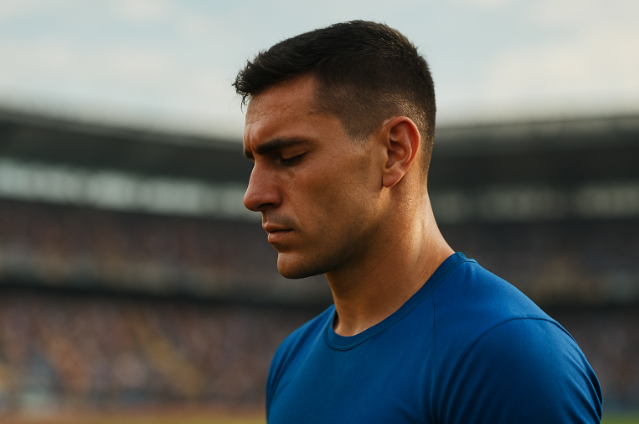
In elite sport, the gap between triumph and heartbreak is often the width of a fingernail. At that level, almost everyone trains to exhaustion, eats with military precision, and studies opponents until the tactics become second nature. Yet, time and again, it is the athlete who stays composed under the white-hot glare of pressure who comes out on top. This is why mental performance — the art and science of training the mind — has gone from being a whispered side topic to a headline priority.
From Afterthought to Essential Weapon
Not so long ago, sports psychology was something athletes turned to only when things went wrong — a slump in form, a fear they couldn’t shake, a run of big-match nerves. Now, many of the world’s top teams have sports psychologists on staff year-round, woven into the same daily structure as fitness coaches and physios. The shift isn’t just about fashion; it’s about results.
Athletes and coaches have realised that mental performance isn’t abstract “feel-good” talk — it’s practical. It shapes decision-making in high-stakes moments, keeps focus razor-sharp, and helps athletes recover from setbacks mid-game. In sports where the physical margins are minimal, this can be the real tie-breaker.
Training the Mind Like a Muscle
The methods vary, but most elite programmes blend a few core mental skills.
Goal-setting and mental rehearsal are almost universal. The idea is simple: map out what you want, then see it in your mind before it happens. A sprinter might picture the perfect start, the drive phase, and the dip at the finish — down to the sound of spikes on the track. This isn’t daydreaming; studies show that rehearsing movements in vivid detail activates many of the same brain pathways as doing them physically.
Then there’s cognitive restructuring — basically rewiring your inner monologue. A tennis player who mutters, “Don’t double fault,” is far more likely to do exactly that. Learning to switch that thought to “Hit your target” changes focus and energy. It’s simple but incredibly powerful.
Pressure simulation is another favourite. Coaches crank up the noise, shorten the time, or throw in unexpected obstacles during training. By the time the real match arrives, those situations feel familiar instead of overwhelming.
And perhaps most underrated: attentional control — knowing when to zoom in on the tiniest detail, like the feel of the ball on the foot, and when to pull back to scan the bigger picture. Get stuck in one mode, and the game can pass you by.
Mindfulness — More Than a Buzzword
Mindfulness has crept into locker rooms in recent years, and for good reason. It’s not about incense and sitting cross-legged for hours. It’s about being exactly where you are, without dragging in the baggage of what just happened or what might happen next. In sport, that can be game-changing.
A basketball player who just missed two free throws can either spiral into panic or take a single slow breath, feel the ball in their hands, and reset completely for the next shot. That’s mindfulness in action.
It also connects closely to the much-discussed “flow” state — that sweet spot where time slows down, movements feel automatic, and performance seems effortless. Mindfulness training doesn’t guarantee flow, but it makes the doorway wider.
The best part? It can be integrated into training without stealing hours. A short grounding exercise before a penalty kick, a quick body scan during a water break, even three deep breaths on the sideline — these micro-practices add up. Over weeks and months, they change how an athlete experiences pressure.
When Teams Buy In, Everything Changes
Mental skills work can transform an individual, but it’s even more powerful when a whole team embraces it. Imagine a pre-match ritual where everyone closes their eyes for 30 seconds and synchronises their breathing. It’s not mystical — it’s physiological. Heart rates slow, muscles relax, and there’s a shared sense of calm.
This collective composure becomes contagious. When one player keeps their cool after a setback, others follow suit. The opposite is true as well — panic spreads faster than flu in a dressing room. That’s why some teams now build shared mental routines alongside their tactical drills.
Why Some Still Resist
Not everyone is sold on mental performance work. Some see it as “soft” or think it’s only for those who can’t handle pressure. Others expect instant results and give up when nothing changes after a week.
The truth is, it’s like any other training — consistency matters. You wouldn’t expect to build muscle from one gym session, and you won’t build resilience from one breathing exercise. Coaches and psychologists often have to work just as hard at building trust as they do at teaching the actual techniques.
The Science Under the Hood
This isn’t just philosophy. Brain scans have shown that mindfulness practice strengthens the prefrontal cortex — the part responsible for focus, planning, and self-control. Visualisation activates motor areas in the brain almost identically to real movement. And biofeedback studies show trained athletes can regulate heart rate and stress responses far better under pressure than untrained ones.
In plain terms: these tools change the brain and the body in ways that show up on scoreboards.
Looking Ahead
The next wave will probably involve more tech — wearables that track mental state in real time, VR simulations that replicate the chaos of competition, maybe even AI-driven feedback for focus training. But the core principle won’t change: the mind is a performance tool, not just a passenger.
As physical preparation across elite sport continues to level out, the athletes who can stay mentally clear in the storm will have the edge. And that edge can turn into medals, trophies, and careers.
Final Word
Mental performance is no longer an optional extra — it’s the last frontier. The strongest legs and fastest lungs won’t matter if the mind cracks under pressure. But a clear, trained, and steady mind? That’s where championships are won.
